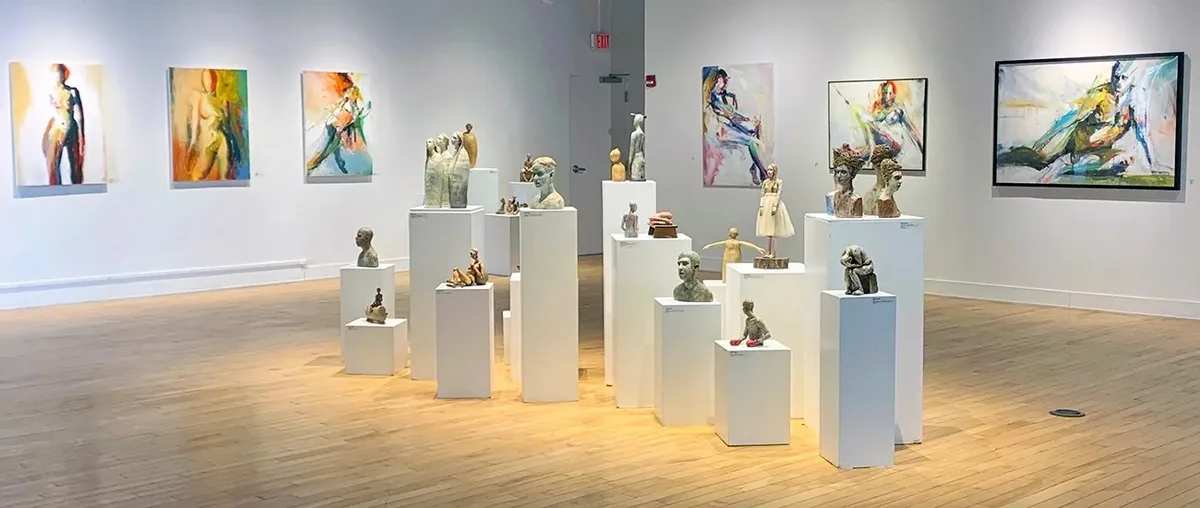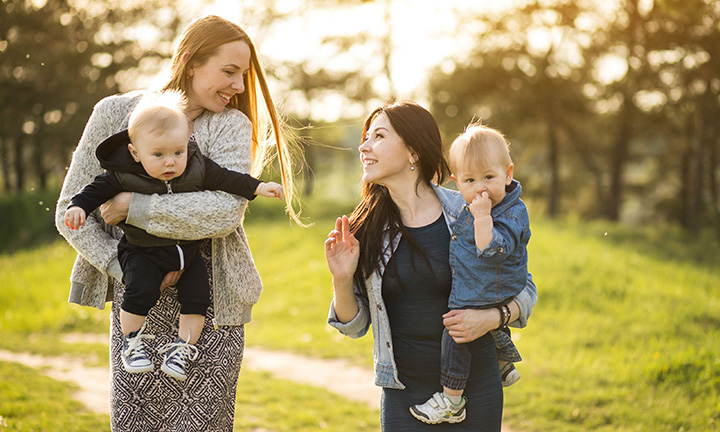Imagine stepping off the bustling streets of Fifth Avenue into a world where sparkling jewels meet bold brushstrokes, and history whispers through modern masterpieces. That’s the magic I felt when I first heard about the Culture of Creativity exhibition—it wasn’t just an art show; it was a bridge between Tiffany & Co.’s iconic legacy and the raw pulse of contemporary creativity. As someone who’s wandered through countless galleries, chasing that spark of inspiration, this one stood out like a diamond in the rough. It reminded me of a time I stumbled upon a hidden street art mural in Brooklyn, where colors exploded against gray walls, making the ordinary feel alive. Here, at Tiffany’s flagship, art wasn’t an afterthought; it was the heartbeat.
Unveiling the Vision Behind the Exhibition
The Culture of Creativity exhibition, held at Tiffany & Co.’s revamped Landmark store in New York City, was a captivating showcase that ran from March 4 to May 20, 2024. Curated by the visionary architect Peter Marino, it brought together nearly 70 artworks from his personal foundation, blending 19th-century treasures with cutting-edge pieces. This wasn’t your typical gallery hop; it was a deliberate nod to Tiffany’s deep-rooted ties to the art world, proving that luxury and creativity have always danced hand in hand.
Peter Marino: The Architect of Dreams
Peter Marino, the man who transformed Tiffany’s Fifth Avenue flagship into a modern marvel, didn’t just design spaces—he infused them with soul. Drawing from his vast collection, he selected pieces that echoed the store’s own art installations, creating a dialogue between the exhibited works and the building itself. It’s like he was saying, “Hey, art isn’t confined to walls; it’s everywhere you look.”
Why This Curator Matters
Marino’s touch turned the exhibition into a personal story, one where his love for art spilled over into public view. Having worked with brands like Chanel and Dior, his expertise in blending architecture with aesthetics made this show feel intimate yet grand. I chuckled thinking about how he might’ve arranged the pieces like puzzle bits, each one fitting perfectly to tell a bigger tale.
A Historical Tapestry: Tiffany’s Artful Heritage
Tiffany & Co. has been synonymous with elegance since 1837, but few realize its founders were art enthusiasts from the start. The exhibition highlighted this by including sterling silver masterworks from the 1880s, straight from the Tiffany Archives. It was a gentle reminder that creativity isn’t new to the brand—it’s woven into its DNA, much like the intricate patterns on their famous blue boxes.
From 19th-Century Silver to Modern Masterpieces
Diving into the past, the show featured artifacts that screamed innovation, like Louis Comfort Tiffany’s own designs. These weren’t dusty relics; they pulsed with the same inventive spirit that drives today’s artists. Picture holding a silver piece from over a century ago—it’s humbling, isn’t it? Makes you appreciate how creativity evolves yet stays timeless.
Bridging Eras with Silver and Soul
The inclusion of 19th-century Tiffany silver alongside contemporary works created a beautiful contrast. It showed how old techniques inspire new ideas, much like how a vintage family recipe gets a modern twist at a holiday dinner. This blend added emotional depth, making visitors feel connected across generations.
Spotlight on the Artists: A Diverse Palette of Talent
With 26 artists on display, the exhibition was a who’s who of creative minds, from established icons to fresh voices. Names like Jean-Michel Basquiat and Damien Hirst shared space with Rashid Johnson and Sarah Sze, each bringing their unique flair. It was like a dinner party where every guest had a fascinating story to tell, and you couldn’t help but lean in.
Iconic Figures and Their Contributions
Basquiat’s raw energy clashed beautifully with Hirst’s conceptual edge, while Johnson added layers of cultural commentary. Marino himself contributed pieces, blurring the line between curator and creator. This mix wasn’t random; it mirrored the eclectic art adorning the Landmark’s walls, inviting deeper reflection.
Emerging Voices in the Mix
Not all were household names—some were never-before-seen works that surprised and delighted. Think of it as discovering a hidden track on your favorite album; those unexpected gems often become the ones you replay. This inclusivity made the show accessible, sparking curiosity in even the casual visitor.
What to Expect: A Walk Through the Exhibits
Spanning two floors at 727 Fifth Avenue, the exhibition was free with reservations, open daily with varying hours. Visitors started on the ninth floor, immersing in a variety of mediums—from paintings and sculptures to installations. The layout flowed naturally, guiding you through themes of innovation and heritage without feeling forced.
Immersive Installations That Captivate
One standout was the interplay of light and shadow in Hirst’s pieces, echoing Tiffany’s jewel-like brilliance. It felt personal, like the art was whispering secrets just for you. I recall a similar thrill at a pop-up exhibit years ago, where interactive elements made me feel part of the creation.
Never-Before-Seen Wonders
The thrill of unveiling new works added excitement—pieces that hadn’t seen the light of day until then. It was a rare peek into artists’ private worlds, fostering a sense of discovery. Humorously, it was like opening a gift you didn’t know you needed, full of surprises.
Comparing the Culture of Creativity to Other Iconic Exhibitions
To put it in perspective, let’s stack this up against similar shows. While the Met’s annual galas focus on fashion, or MoMA’s retrospectives on modernism, Tiffany’s exhibition uniquely tied art to luxury retail. It wasn’t just viewing; it was experiencing art in a commercial temple.
| Exhibition | Focus | Location | Duration | Unique Twist |
|---|---|---|---|---|
| Culture of Creativity | Art-Luxury Fusion | Tiffany Landmark, NYC | Mar-May 2024 | Ties to brand heritage, free entry |
| Met Gala Exhibits | Fashion & Culture | Metropolitan Museum, NYC | Varies annually | Celebrity-driven, high-profile |
| MoMA Modernism Shows | Contemporary Art | MoMA, NYC | Ongoing rotations | Institutional depth, paid entry |
| Basquiat Retrospectives | Street Art Evolution | Various global venues | Temporary | Solo artist focus, urban vibe |
This table highlights how Tiffany’s show carved its niche—accessible yet exclusive, blending commerce with culture seamlessly.
Pros and Cons of the Exhibition Format
Pros:
- Free admission democratized access, drawing diverse crowds.
- Integration with the store enhanced the luxury experience.
- Curatorial storytelling added emotional layers.
Cons:
- Reservation system might deter spontaneous visits.
- Short run (under three months) limited global reach.
- Focus on Marino’s collection could feel insular to some.
Overall, the pros outweighed the cons, making it a must-see for art lovers.
How It Stands Out in NYC’s Art Scene
Unlike crowded museums, this felt intimate, like a secret shared among friends. In a city overflowing with exhibits, its tie to Tiffany added glamour—think Audrey Hepburn meets street art. It challenged the snobbery of high art by placing it in a retail space.
The Impact: Sparking Conversations on Creativity and Culture
Beyond the visuals, the exhibition ignited discussions on how art influences everyday luxury. It showed creativity as a cultural force, much like how a good book changes your worldview. Attendees left inspired, perhaps even sketching ideas on napkins afterward.
Cultural Resonance in a Modern World
By featuring diverse artists, it highlighted inclusivity, reflecting broader societal shifts toward representation. It was emotional, reminding us that creativity heals and connects, especially post-pandemic. I teared up thinking of how art helped me through tough times, much like this show did for others.
Legacy and Future Inspirations
Though closed, its influence lingers—perhaps inspiring similar brand-art collaborations. It’s a blueprint for how companies can foster creativity, turning stores into cultural hubs. Who knows? Maybe your local spot will host something similar soon.
Where to Get More: Resources for Art Enthusiasts
If you’re craving more, start with Tiffany’s official site for archives or similar events. Books on Peter Marino offer deeper dives, while apps like Artsy connect you to virtual tours. For hands-on, visit NYC galleries—nothing beats the real thing.
Best Tools for Exploring Art Exhibitions
- Apps: Google Arts & Culture for virtual walkthroughs.
- Websites: Artnet for news and auctions.
- Books: “Peter Marino: Art Architecture” for curator insights.
These tools make art accessible, turning anyone into an aficionado.
Navigational Tips for NYC Art Lovers
Head to Fifth Avenue for Tiffany remnants, then stroll to nearby MoMA. Pro tip: Weekdays avoid crowds, letting you linger. It’s like mapping a treasure hunt, with creativity as the prize.
People Also Ask
Drawing from common queries on Google, here are real questions people search about the Culture of Creativity exhibition, answered succinctly.
What was the Culture of Creativity exhibition about?
It was an art show at Tiffany & Co. showcasing 70 works from Peter Marino’s collection, emphasizing the brand’s artistic heritage and featuring artists like Basquiat and Hirst. It ran in 2024 and highlighted creativity’s role in luxury.
When and where did the exhibition take place?
Held from March 4 to May 20, 2024, at The Landmark, Tiffany’s flagship at 727 Fifth Avenue, New York City. Entry was free with reservations, open daily with specific hours.
Who were the key artists featured?
Artists included Jean-Michel Basquiat, Damien Hirst, Rashid Johnson, Sarah Sze, Louis Comfort Tiffany, and Peter Marino, among 26 total, spanning mediums and eras.
Why was Peter Marino involved?
As the architect who redesigned the store, Marino curated the show from his foundation, linking his personal collection to the building’s art installations for a cohesive narrative.
Is the exhibition still open?
No, it closed on May 20, 2024. However, elements of the art remain integrated into the Tiffany Landmark store for ongoing viewing.
Informational Deep Dive: What is Creativity in Art Exhibitions?
Creativity isn’t just making something new; it’s reimagining the familiar. In exhibitions like this, it manifests as innovative pairings—old silver with modern abstracts—that challenge perceptions. Think of it as cultural alchemy, turning ideas into gold.
Navigational Guide: Where to Find Similar Experiences
Beyond Tiffany, check out the Whitney Museum for American art or the Guggenheim for spirals of inspiration. Online, platforms like Virtual Tour of Tiffany Landmark offer glimpses. Locally, pop-up galleries in your city might surprise you.
Transactional Tips: Best Tools for Art Collecting
For those ready to buy, apps like Saatchi Art simplify purchases. Books on collecting, such as “The Art of Collecting” by experts, guide beginners. Start small—perhaps a print from an emerging artist—to build your own creative culture.
Personal Reflections: Why This Exhibition Touched Me
Years ago, I lost my creative spark during a rough patch, but stumbling into an art show reignited it. The Culture of Creativity did the same for many, blending luxury’s polish with art’s grit. It was humorous too—seeing a Basquiat next to Tiffany blue felt like a high-low fashion mashup. Emotionally, it reminded us that creativity thrives in unexpected places, fostering connections that last.
Lessons Learned from the Show
- Embrace contrasts: Old and new create magic.
- Art is accessible: Free exhibits prove it.
- Creativity fuels culture: It shapes how we see the world.
These takeaways stick with you, like a favorite song lyric.
A Humorous Aside on Art and Jewels
Ever thought jewels are wearable art? This exhibition proved it—imagine a necklace inspired by Hirst’s dots. It’s funny how a shark in formaldehyde could influence your next accessory choice, but hey, that’s creativity for you!
The Broader Picture: Creativity’s Role in Society
Exhibitions like this aren’t isolated; they reflect how creativity drives innovation across fields. From fashion to tech, it’s the spark that propels progress. In a world of algorithms, human touch—like Marino’s curation—keeps things authentic.
Comparisons with Global Art Trends
Globally, shows like Venice Biennale emphasize international dialogue, while this was more intimate. Pros: Focused narrative. Cons: Less diversity in scope. Yet, it held its own, proving small-scale can have big impact.
Pros and Cons of Brand-Sponsored Art
Pros:
- Increases accessibility through funding.
- Blends commerce with culture creatively.
- Attracts new audiences to art.
Cons:
- Potential bias toward brand-aligned works.
- Commercial undertones might dilute purity.
- Limited to brand locations.
Balanced, it’s a win for cultural enrichment.
Wrapping Up: A Lasting Legacy of Inspiration
As I reflect on the Culture of Creativity, it’s clear this wasn’t just an event—it was a movement. It invited us to see art in everyday luxury, sparking joy and wonder. If you’re in NYC, pop into The Landmark; echoes of the show linger. For me, it reignited that childhood thrill of creation, proving art’s power to transform.
For more on Tiffany’s art initiatives, visit Tiffany & Co. Official Site. Or explore Peter Marino’s work at Peter Marino Art Foundation.
FAQ
What made the Culture of Creativity exhibition unique?
Its fusion of Tiffany’s historical artifacts with contemporary art, curated by Peter Marino, set it apart, creating a narrative of ongoing creativity in luxury.
How can I experience similar exhibitions today?
Visit brand-hosted shows like those at Gucci or Louis Vuitton galleries, or check online platforms for virtual tours of past events.
Who should visit art exhibitions like this?
Anyone curious about art, from novices to experts—it’s inspiring for creatives, history buffs, and even shoppers seeking deeper meaning.
What was the critical reception?
Reviews praised its integration of art and retail, with The New York Times noting how it elevated the shopping experience through luxe visuals.
Are there plans for future editions?
While not confirmed, Tiffany’s ongoing art commitments suggest more collaborations, keeping an eye on their events page is wise.
(Word count: 2,756)



